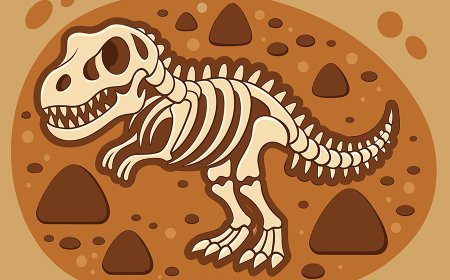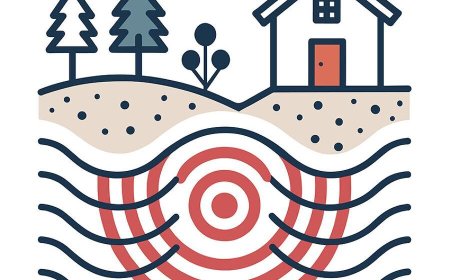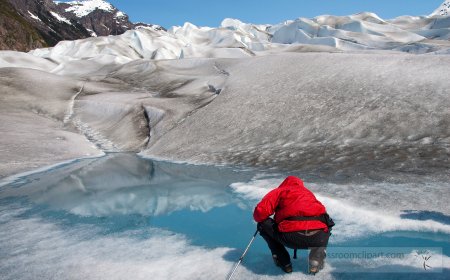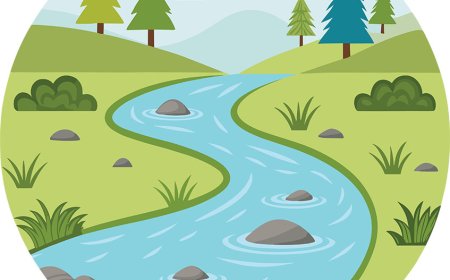How Remains Become Fossils A Step by Step Guide for Students
Discover how bones shells and footprints become fossils from burial to mineral replacement Learn fossilization stages and how fossils reveal Earth history
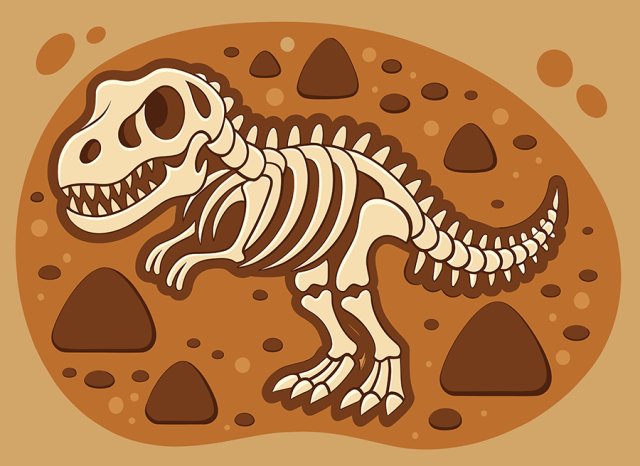
Introduction
Have you ever held a seashell pressed into rock or seen a giant dinosaur skeleton in a museum and wondered how it turned to stone? A fossil begins as the remains or traces of a living thing and then changes over a very long time. Most organisms decay quickly after they die, so becoming a fossil is rare. To be preserved, remains usually need fast burial and protection from oxygen scavengers and waves. Groundwater carrying dissolved minerals can slowly fill tiny spaces in bone or wood, turning soft parts into hard rock like copies. Over thousands to millions of years, these preserved remains or traces become evidence of ancient life and past environments. Learning when something becomes a fossil helps us read Earth's story layer by layer.
🔍 What are fossils and when do remains become fossils?
Fossils are the preserved remains or traces of ancient life. They include bones teeth shells leaves footprints burrows and even dinosaur skin impressions.
So when does something become a fossil?
-
Scientists usually use an age of about 10,000 years or more as a guideline. Younger preserved remains are often called subfossils.
-
Material becomes a fossil when it is preserved in rock or natural substances such as amber ice or tar long enough that natural processes stabilize it.
Common fossilization pathways (with examples):
-
Permineralization: Minerals carried by water fill pores in bone or wood. Example: Petrified wood.
-
Replacement: Original material is dissolved and replaced by minerals. Example: Shells turned to quartz.
-
Carbonization: Heat and pressure leave a thin carbon film. Example: Ferns in shale.
-
Molds and Casts: A shell dissolves leaving a mold that later fills to make a cast.
-
Amber entrapment: Insects trapped in tree resin that hardens.
-
Freezing or tar preservation: Mammoth hair and tissue in ice or bones in tar pits.
🌍 Why are fossils important?
Fossils are our time machines. They:
-
Reveal what lived where and when, showing changes in life through deep time.
-
Help scientists reconstruct ancient climates and environments such as shallow seas deserts or forests.
-
Provide evidence for evolution and how species adapt or go extinct.
-
Allow geologists to date rock layers and match them across continents using index fossils.
-
Inform everyday life by guiding searches for groundwater and energy resources formed in ancient settings.
🧪 Everyday examples
If you visit a local museum you might see a dinosaur bone that looks like rock. That is because minerals replaced or filled the bone over millions of years. Nearby exhibits may show leaf impressions or fish skeletons preserved in fine mudstone which tells us a quiet lake once existed there.
Maybe you have walked on a limestone sidewalk. Limestone often forms from layers of tiny sea creature shells that settled on the ocean floor. Some garden stones even show ancient shells. Beachcombers sometimes find shark teeth washed from older sediments. Jewelry made from amber can hold tiny insects that were trapped in sticky resin long ago. These familiar items are everyday clues to fossilization at work.
✨ Fun Facts
-
Fewer than a tiny fraction of living things ever become fossils because decay is fast and conditions must be just right.
-
The word fossil comes from a Latin word meaning dug up.
-
Not all fossils are body parts. Trace fossils such as footprints and burrows record behavior.
-
Petrified wood often preserves tree rings so scientists can study ancient growth seasons.
-
A subfossil can still contain original material such as collagen or DNA if it is not too old.
📌 Key Takeaways
-
A fossil is preserved evidence of ancient life usually older than about 10,000 years.
-
Fast burial plus mineral rich water are key to fossilization.
-
Fossils form in several ways including permineralization replacement carbonization and molds or casts.
-
Fossils help us date rocks reveal past environments and understand evolution.
-
Subfossils are younger partially preserved remains on their way to becoming true fossils.
🐾 Kid-Friendly Summary
When plants or animals die they usually disappear. But if they are buried quickly and protected their bones shells or footprints can harden over a long time. Minerals fill in the spaces and the remains turn to stone like copies. After many thousands or millions of years we discover these fossils and learn what Earth was like long ago.
📚 Vocabulary Words
-
Fossil: Preserved remains or traces of ancient life.
-
Subfossil: Younger preserved remains not yet fully fossilized often less than about 10,000 years old.
-
Permineralization: Minerals fill tiny spaces in bone or wood making them hard.
-
Replacement: Original material dissolves and new minerals take its place.
-
Carbonization: Thin carbon film outlines plants or soft bodied organisms.
-
Mold: Hollow impression left when the original object dissolves.
-
Cast: A filled in copy made when a mold later fills with minerals.
-
Trace fossil: Evidence of activity such as footprints tracks burrows or nests.
-
Amber: Hardened tree resin that can trap and preserve organisms.
-
Index fossil: Fossil of a widespread short lived species used to date rocks.
Interactive Quiz: When Does Something Become a Fossil?
- What is the best general age guideline for calling something a fossil?
- More than 100 years old
- More than 10,000 years old
- More than 100,000 years old
- Exactly 1 million years old
- Which condition most helps fossilization begin?
- Slow burial with lots of oxygen
- Fast burial that protects remains
- Being left on the surface
- Strong sunlight
- In permineralization what fills the pores of bone or wood?
- Air
- Plant roots
- Minerals carried by water
- Sand only
- A shell dissolves leaving an empty impression in rock What is this called?
- Cast
- Mold
- Carbon film
- Amber
- Which is a trace fossil?
- Footprint
- Shell replaced by quartz
- Petrified wood
- Dinosaur bone
- What do fossils help scientists understand?
- Only current weather
- Ancient life and environments
- How rainbows form
- The phases of the Moon


















































